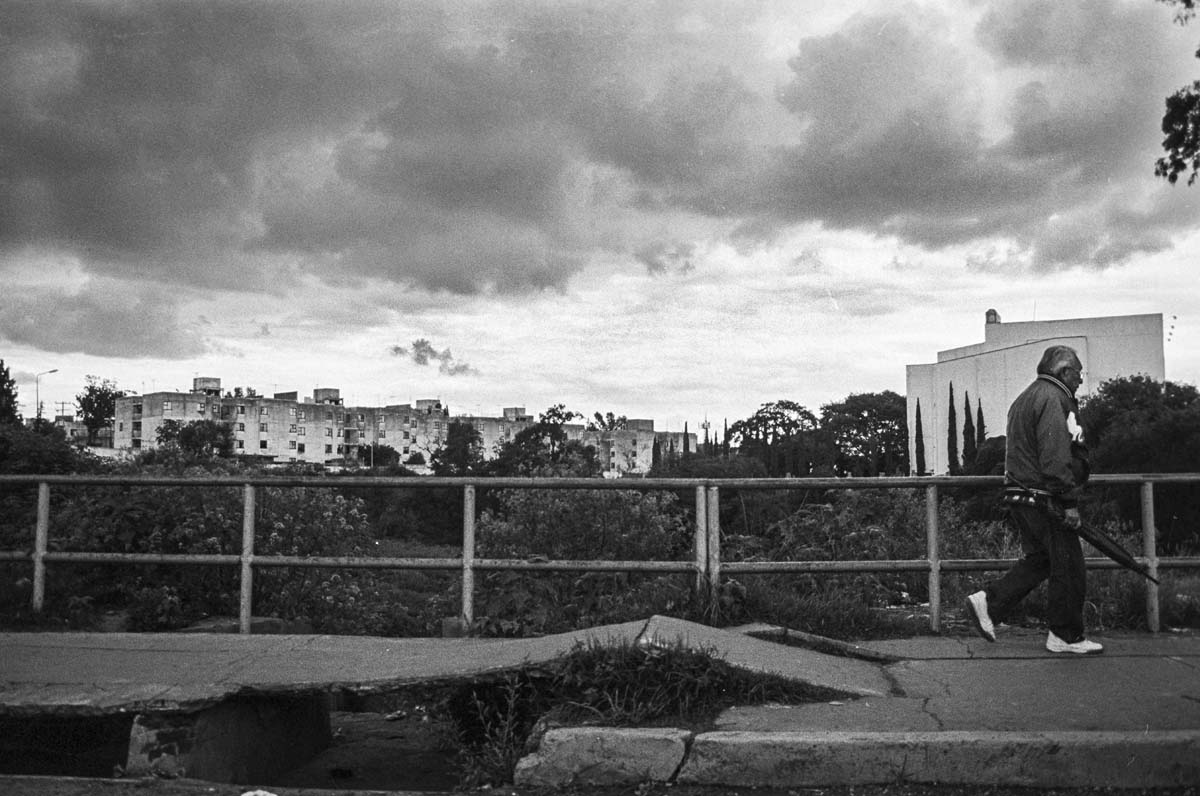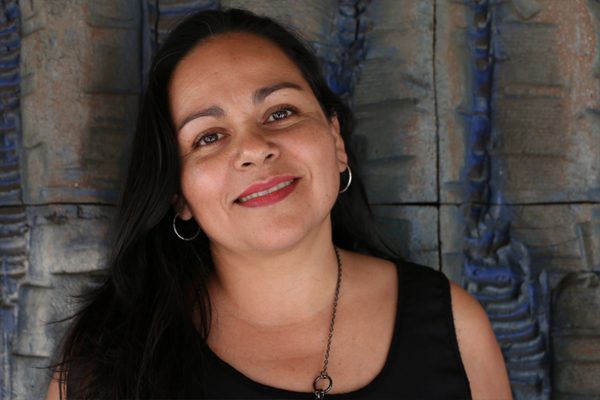Aureliano and Esther

Aureliano Valdovinos is walking under the October moonlight. The dirt road is full of shadows, but he is not afraid. He can feel his gun at his waist, moving with him. He’s been walking for more than one hour. Once he gets to the crossroad, he will catch a bus to Sahuayo; a second bus drops him off in San Pedro Caro, Michoacan, where he is now living. With each step he takes, he is leaving his old village, Jaripo, and his girlfriend of several years, Esther. The cluster of adobe huts, illuminated only by petroleum lamps, gets smaller by the minute.
Men have been leaving Jaripo for years. This small village in the state of Michoacan, Mexico, along with many other villages across the country, sends its working age men to the United States, to work legally as manual laborers under the Bracero program, an agreement the two countries entered in 1942. Thousands have left with contracts, for months at the time. They return home for some weeks, just to depart again with a new contract. Yet, poverty is not the reason Aureliano is walking away from the place where he was born.
It was August 15, the day of the Virgin Mary. Just after 6:00 pm. People were gathered at church for a rosary in honor of the Virgin. The sweet smell of flowers, and candles burning, mixed with the murmur of prayer. At the altar, a statue of Virgin Mary, dressed in a blue and white outfit, stared at devotees with an almost human expression of kindness and compassion.
Nobody knows why Moices Salceda pointed his gun at Rafael that afternoon. Rafael was sitting on some steps leading to the plaza. Later, they said Moices threaten to kill Rafael for no reason, other than feeling like bullying someone he knew unarmed. The two had never had any problems before. Antonio, Aureliano’s younger brother, happened to be standing nearby. He saw Moices pointing his gun at Rafael, a close relative, and ran to find a gun for himself, snatching it from one of his uncles. Antonio came back yelling for Moices to leave Rafael alone, and to come resolve whatever the problem was, now that he too was armed.
The two men ended up face to face. It all happened fast. Antonio fired first. One bullet hit Moices in the head. Moices lay dead on the street; 18-year-old Antonio was in shock. Revenge was law in town; it wouldn’t be long before armed men from the Salceda’s family stormed the plaza. Aureliano heard the commotion from inside the church. When he realized Antonio was involved, he rushed to his brother, who was still unable to move.
“Let’s go!”
Aureliano kept repeating.
“We have to go!”
Antonio started to move. He slowly bent over to pick up his hat and then took off running across people’s backyards.
Nobody else died that day in Jaripo. The gun battle that followed between the the Salcedas and the Valdovinos left only one wounded man on the Valdovinos’s side; but nothing was ever the same. Most of the Valdovinos clan had to move to another town. Aureliano’s family home and his father’s land had to be sold. Aureliano missed his friends, and working on his father’s fields, but more than anything he missed Esther.
Esther was a pretty, quiet girl, with long, dark, wavy hair and dreamy eyes. They met in elementary school, and remained friends until he asked her to be his girlfriend in their early teens. That’s why now, after the troubles, he kept coming back every week or two. He would only see Esther for half an hour or one hour each time. She pleaded for him to stop visiting. A few years had passed since Moices was killed. Nobody had bothered Aureliano during his visits, but is was impossible to say it would never happen. His gun was always ready; Esther was always on edge.
Esther’s family liked Aureliano. Her mother made tortillas for his mother for a small fee. They noticed the handsome, hard-working young man early on, and welcomed the relationship once they learned about it. The couple had talked marriage but nothing was decided, until one day Esther accepted Aureliano’s proposal in a letter. Aureliano paid for the wedding with money he earned as a bracero, pruning beets in Idaho, harvesting peas in Minnesota and corncob in Delaware. The newlyweds settled in San Pedro Caro. He was 24-years-old, Esther was two years younger.
For the next several years they were often away from each other. Esther, like many other Mexican women at the time, was giving birth and raising kids almost on her own. Aureliano always sent money home when he was away, working in the United States. He enjoyed bringing back gifts for the kids when he returned. But he always left again, sometimes with contracts, sometimes working independently. Esther would find out she was pregnant and write to her husband with the news. In spite of the money coming reliably in Aureliano’s letters, it was tough being a single mother to seven children. The day little Carlos died of stomach flu, which often killed poor babies. Aureliano was working in the United States. He didn’t get a chance to say goodbye to his son.
Every day, at exactly 12:00 pm, the women in the neighborhood took out their chairs and sat in front of their houses to wait for the mailman. Sometimes he passed by a house without stopping. That meant no letter for them. They picked up their chairs and went back inside, hopeful that tomorrow would be different. Sometimes letters came with no money orders. The husband or the son would explain that frost had made it difficult to harvest the tomatoes or the asparagus. They had to wait. Yet the mail remained the most expected time of the day.
San Pedro Caro was a town of fisherman, farmers and migrant workers. By the beginning of the sixties running water was a privilege for few. Women and girls washed clothes by hand at the public “lavaderos,” or even at the edge of a canal, also popular with boys for swimming. Neighbors with wells in their backyards, opened their houses for the community. They endured the constant coming and going of people carrying buckets of water. Nobody had to pay, only patiently wait for their turn and follow the rules, like using only the rope and bucket already at the well to get the water out.
At night, and regardless of her complaints about the lack of help to buy new batteries, Maria Gil would take her radio out and put it where all could hear the soap opera. Women and kids alike surrounded the neighborhood’s only radio.
Esther was not very sociable, but it was difficult not to become part of the communal routines. People shared more than radios and water, and more than the sounds of kids playing on the streets; they shared the absences of loved ones, and the hope and loneliness that came with it. They shared the hardships for the lack of social services and the heartache of seeing babies die. But most also shared a dream, the dream of one day setting foot in “El Norte,” joining their husbands, fathers and sons.
Every time Aureliano returned home from the United States, he found work in the fields of well-to-do families in town. Even if he only had weeks to be with his family, he didn’t rest. One morning when on his way to work, while hauling farming equipment with his horse, tragedy struck. The horse got scared and threw him. The heavy piece of farming equipment trapped and crushed one of Aureliano’s arms when it fell on him. Some surgeries later he had improved but not totally recovered. For several years he was unable to return to work in the United States. He continued working on whatever jobs he was able to handle, but with more mouths to feed – now a total of 11 – for the first time since they got married, Esther and Aureliano’s family experienced hunger.
The economic situation was so bad that the oldest kids had to drop out of school to help. By the time Aureliano’s mobility and strength returned to his arm, some of the kids were young adults and teenagers. It was now their turn to look North. They left one by one, the way it always happens. At the beginning of the seventies, Aureliano made once again the trip to the United States to reunite with his sons, in Los Angeles, California, sending for Esther and the younger kids a couple of years later. The two oldest daughters had already married and stayed in Mexico.
For Esther “El Norte” was nothing like she had imagined. The two-bedroom apartment where she and her three kids landed, was infested with rats and roaches. The space was already home to Aureliano, three of their sons and two other male relatives; one son had already moved out and had a wife and a baby. The apartment complex was in the heart of East Side Clanton 14 St territory, one of the oldest gangs in Los Angeles. The two adult sons liked to party and were often out late at night. The teenager was ready to follow in their footsteps. Drive-by shootings and gang violence were frequent.
Esther had no friends to talk to. She had to clean and cook for ten people. She and her two girls often pushed a shopping cart full of dirty clothes to the laundromat. She always made sure to get the sand from the beach out of the seams and pockets of her son’s pants. She imagined the beach, and all the nice places in California she had been told about in stories. So far, she had not seen many.
During the week, with the kids at school and the man at work, in a dilapidated living room and surrounded by old furniture, she often buried her face in her hands and cried. Esther and Aureliano had grown distant from years of separation. Aureliano couldn’t understand why she was unhappy. It was true they didn’t have a car, they didn’t go places. It was ten people in a two-bedroom apartment. She was alone for long periods of time, unable to get around on her own, but was it really that bad? Why couldn’t she just be content?
As months and months passed, sadness and hopelessness took a hold of her middle age heart. She finally had enough, returning to Mexico with Aureliano, and their two younger daughters in the early eighties. Sadness went home with her. Depression never really left after those years.
Settled back in Mexico her daughters had what they needed, but when it came time for them to go away to college, Esther couldn’t let them go. Universities were several hours away, in Morelia and Guadalajara. It was better they returned to Los Angeles, there at least they had their brothers.
Luz Elena, the youngest daughter and the one that used to run to Esther with tissue for her to dry her tears, back when they lived near 14th Street, was the last one to leave the family home in Mexico, and move back to the United States. Once again, Esther found herself in an empty house. Aureliano always had an easier time adapting to the changes. In San Pedro, he enjoyed cock fights and sitting at the plaza with his friends. Esther walked to church and to the market alone most of the time.
Esther and Aureliano returned to the United States many times, they stayed with their son’s and daughters in the houses they purchased in the suburbs of Los Angeles: South Gate, Huntington Park, Downey. They welcomed many grandkids and then great-grandkids over the years. She told stories of how much she had worried and how difficult those first years in the United States had been. When shopping at the mall with Luz Elena, she picked nice shoes and nice clothes for herself. Don’t I deserve nice things, she would ask no one in particular. A picture from that time, of her, Aureliano and her two daughters, shows her standing in front of a water fountain at Macarthur Park in Los Angles, her lips tight and her eyes looking far into the distance.
Esther died in Downey, California at the age of 78.
Aureliano will soon turn 90. He remembers the beauty of her long hair and her blessings every time he started back down the dirt road, back in Jaripo, back when they were young.

September 2, 2016










